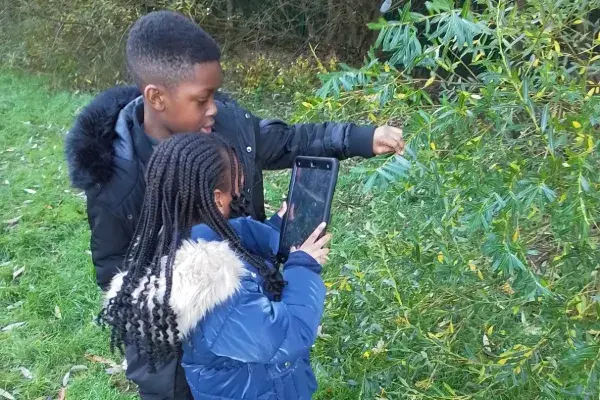What to do with the Nature Park this winter

Short days and grey skies may lead you to think that there’s not much going on outside at this time of year, but this couldn’t be further from the truth! Embrace the winter season by having a go at some of our suggested activities over the next few months.
Map your habitats
There are eight habitat types to focus on in the habitat mapping activity, but there are certain habitat types that are particularly good to survey in winter. With lots of life dormant during the colder months, it’s a good time to focus on mapping the areas of your site that fall into the ground without plants category, such as playgrounds, paths, car parks and bare earth. Winter is also ideal for mapping water habitats because the extra rain at this time of year makes it easy to find the wet areas of your site, and mapping tree habitats as seeing the difference between evergreen and broadleaf trees will be even more apparent.
Mapping your habitats creates a baseline so you can track the gains you achieve for nature as you progress through the Nature Park programme, and allows you to collaborate with the Natural History Museum on groundbreaking research into nature recovery!
Get inspired and start planning habitat improvements
Through the habitat mapping activities, you and your class may have started to identify areas that could be improved for both wildlife and the school community through creating new habitats. Perhaps it’s some ground without plants that could be brightened up with some planters, or an area of woodland that could be extended with some more trees. Check out our resources below to spark ideas about the improvements you might want to make!
Webinar: making changes to your site
Spend some time outside during Children’s Mental Health Week
3-9 February is Children's Mental Health Week, so why not plan some time to take lessons outside and connect to nature? The Nature Connection activities in our resource library span all key stages and range from forest bathing to imagining your space from the points of view of different wildlife. Be sure to check out our guide to climate education and mental health too, to get inspiration for how to support learners to engage with constructive narratives, develop coping strategies and build agency to protect their mental health and wellbeing while learning about climate change.
Go to Nature Connection activities
Get your community on board with the Nature Park
It’s a great idea to get your whole school community involved in your Nature Park journey. Use our assembly templates to spread the word about your plans to improve your site and think through how you will capture impact of the programme in your school, nursery or college and reflect on which activities and strategies are more engaging and successful for your setting and learners’ needs.
Capturing impact: a Nature Park guide
Find local help and expertise for making changes to your site
For some changes to your site, you might need to get some external help and support. Get in touch with your local Nature Park regional team for advice and guidance and take a look at our guide to finding local help if you’re looking for a contractor to help you put your plan into action.